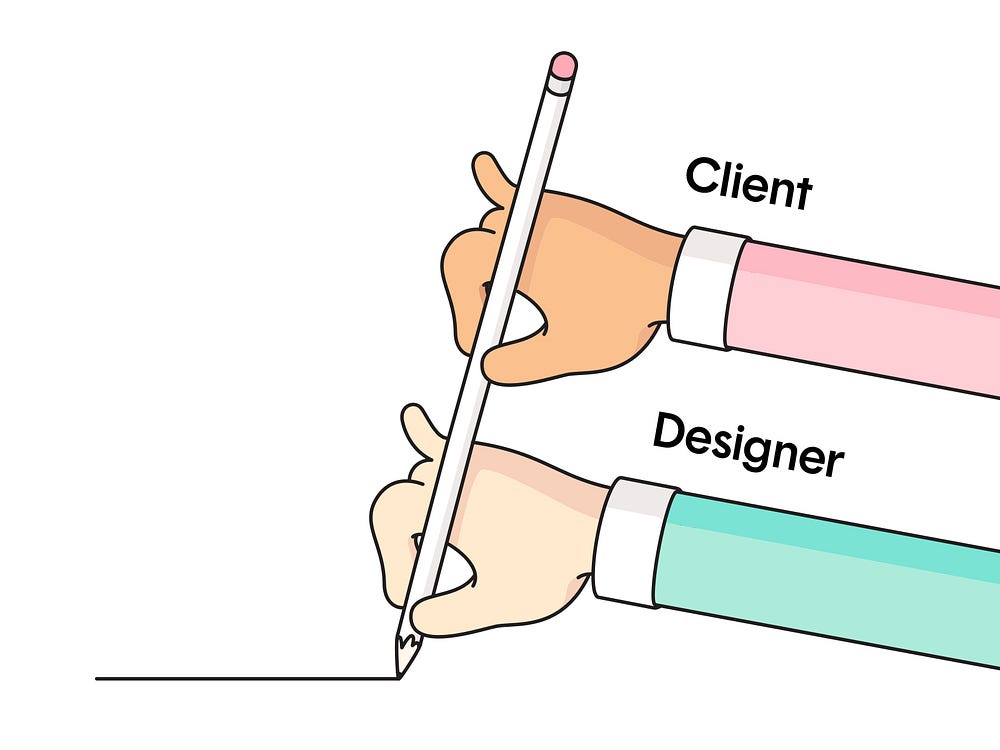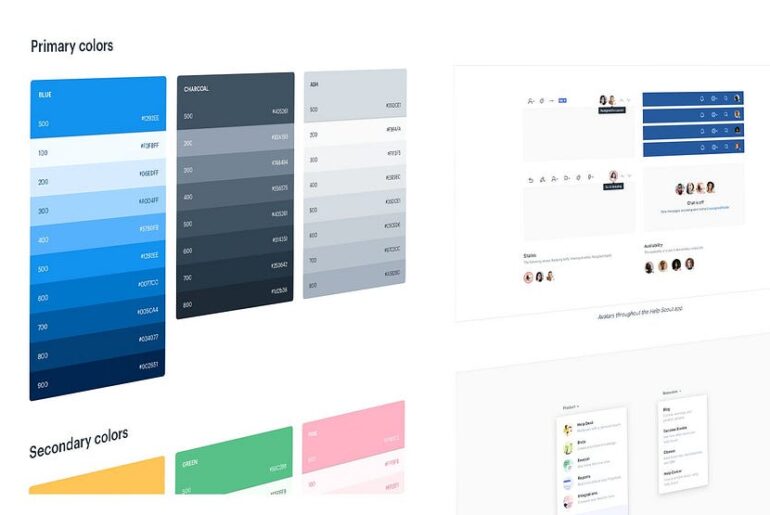For years, I felt like a human Photoshop filter. Then I learned how to make clients see me as a strategist, not just a stylist.
More Than Just Pretty Colors
Early in my design career, I dreaded those vague, dismissive client requests. You know the ones: “Okay, redesign this.” As if all I had to do was sprinkle some colors on their digital canvas and call it a day.
At first, I didn’t know how to respond. I felt like a human version of Photoshop, existing solely to make things look “prettier.” But over time, I realized that the real problem wasn’t the clients themselves — it was the lack of understanding about what a UI/UX designer truly does.
This is the story of how those frustrating moments reshaped my approach to client feedback and taught me the importance of education, communication, and strategy.

The Frustration of Vague Project Briefs
I’ll never forget one particular project. The client’s brief was vague at best.
“Redesign this landing page.”
Their current page was a cluttered mess — long paragraphs that could rival a novel, no hierarchy to guide the user, and about as much white space as a packed elevator. It screamed “please fix me,” but when I suggested rethinking the structure — shortening the content, breaking it into digestible sections, and introducing calls to action — the client brushed it off.
“No one reads that much text in one section,” I explained.
“We need to slice this up, add headings, and focus on key points that drive engagement.”
Their response? A half-hearted nod followed by, “Just make it look better.” That’s when I realized the problem wasn’t their resistance; it was their lack of understanding about the value of UX design. To them, a landing page was just a static picture, not a dynamic tool designed to guide and convert users. That misunderstanding became the root of my frustration — and ultimately, the turning point in how I approached client briefs moving forward.
The Turning Point: Explaining Strategy
It wasn’t a single moment that changed everything, but a series of frustrating encounters. One client in particular stood out: a digital product owner who got visibly angry when I reorganized sections of their landing page in a mockup.
“Why did you change the structure?” they snapped.
“You were just supposed to add colors.”
That argument could have ended badly, but I decided to take a step back and walk them through my design process. I showed them the research I had conducted, the user interviews I had done, and the data that informed my decisions.
I remember thinking to myself, Why do they need to see the value of my strategy? Isn’t it obvious? But it wasn’t obvious — not to them. It became clear that without seeing the thought and effort behind each decision, they’d continue to think of design as surface-level decoration rather than a problem-solving tool.
So I laid it all out: the pain points I uncovered, the insights gleaned from real users, and how those directly shaped my design choices. While they didn’t agree immediately, it was a wake-up call for me. If I wanted clients to value my work, I had to bridge the gap between what I saw as obvious and what they needed to understand.
This wasn’t just about proving my worth — it was about showing how strategy elevated the design and delivered real results.

A New Approach: Educating Clients Early
From that point on, I developed a strategy to avoid these misunderstandings. I started presenting a detailed project plan before any design work began. A 10-page PDF became my secret weapon.
It outlined everything — from research and competitor analysis to wireframing and final design — and explained how each step added value. I even included annotated screenshots of their current website, highlighting UX flaws and how I planned to fix them.
This approach worked wonders. Clients who initially saw design as “just colors” began to appreciate the depth of the process. They understood that their landing page’s success relied on more than aesthetics — it needed at least three key elements to truly succeed:
- Strategic thinking
- User insights
- Problem-solving
Strategic thinking ensured that every design decision aligned with business goals and user needs.
User insights provided the data to inform those decisions, revealing pain points, preferences, and behaviors.
And problem-solving tied it all together, addressing the real challenges users faced rather than just making things visually appealing. These elements transformed the project from a simple redesign into a meaningful, goal-oriented solution.
Why Education is Key
Here’s the thing: clients aren’t our enemies. They don’t wake up in the morning thinking, How can I make my designer’s life miserable today? They’re not out to sabotage your work or undervalue your skills — they’re simply unaware of what good design entails.
And why would they know? That’s not their field of expertise. This lack of understanding isn’t a failure on their part; it’s a gap we, as designers, have the power to bridge.
It’s our job to educate them.
Educating clients is not only crucial for the success of your projects but also immensely beneficial for them. When clients understand the “why” behind your decisions, they gain a clearer picture of how thoughtful design impacts their goals — whether it’s increased conversions, better user engagement, or improved brand perception. This isn’t about making them experts; it’s about making them partners. By involving them in the process and showing them the value of strategic design, you foster collaboration and build trust.
In the long run, educating clients helps you help yourself. A well-informed client is less likely to push back against your ideas or demand last-minute changes. They’re more likely to appreciate your expertise and, most importantly, see you as a problem-solver rather than just a pixel-pusher. It’s a win-win: they get better results, and you get a smoother, more rewarding working relationship.
For example, I had a client who initially rejected my design in favor of another designer’s work. Their choice? A “repainted” version of their existing landing page. The project flopped.
Months later, they came back to me, asking for a redesign of their new product — and this time, they trusted my process. That design ended up doubling their sales, and even their spouse admitted, “We should have gone with this from the start.”
Practical Tips for Designers
So how can you avoid falling into the “just redesign it” trap? Here are some strategies that worked for me:
- Start with a Defined Process: Whether it’s a PDF presentation or a simple outline, show your clients what goes into a proper design project — from research to wireframing to final visuals. This builds authority and sets expectations.
- Identify the Real Problem: Ask your clients lots of questions. By digging deep into their goals, you can help them see that their issues aren’t about color choices — they’re about solving user and business problems.
- Communicate Value, Not Just Visuals: Explain how your design decisions impact conversions, user engagement, or other measurable metrics. It’s easier for clients to buy into your work when they see tangible benefits.
- Stay Calm and Curious: When clients push back, don’t take it personally. Use it as an opportunity to educate and guide them. The more informed they are, the smoother your collaboration will be.

From Frustration to Collaboration
The phrase “Okay, redesign this” used to make me cringe. It felt dismissive, like my work was being reduced to decoration. But over time, I realized that these moments were opportunities to grow — not just as a designer, but as a communicator and educator.
Today, I see those vague requests differently. They’re not just about fixing a landing page; they’re about fixing the client’s understanding of what great design can achieve. And when you get that right, you’re not just creating pretty pictures — you’re creating solutions that make a real impact.





